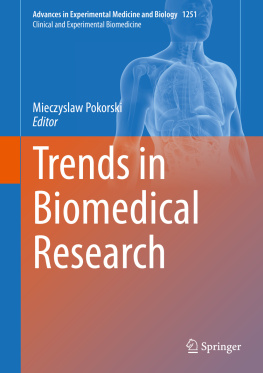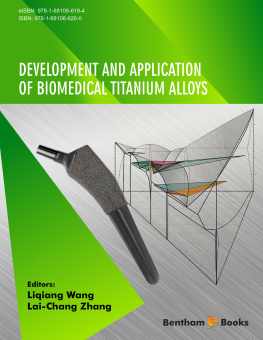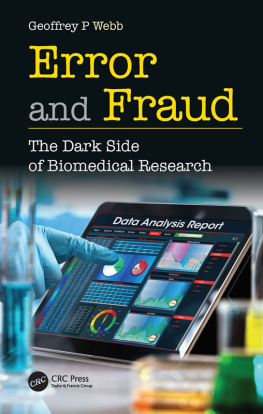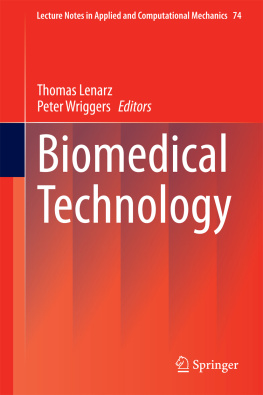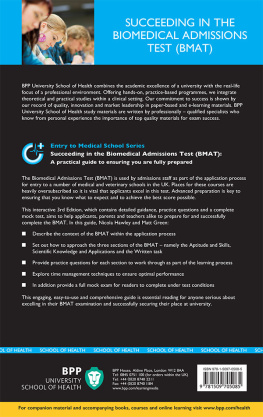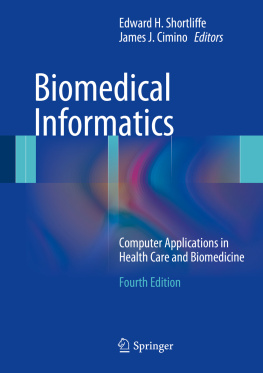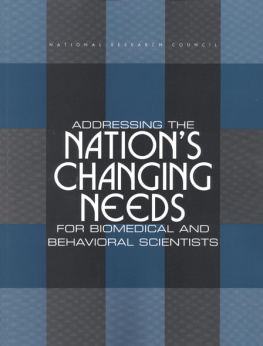Mieczyslaw Pokorski - Trends in Biomedical Research
Here you can read online Mieczyslaw Pokorski - Trends in Biomedical Research full text of the book (entire story) in english for free. Download pdf and epub, get meaning, cover and reviews about this ebook. year: 2020, publisher: Springer International Publishing, genre: Home and family. Description of the work, (preface) as well as reviews are available. Best literature library LitArk.com created for fans of good reading and offers a wide selection of genres:
Romance novel
Science fiction
Adventure
Detective
Science
History
Home and family
Prose
Art
Politics
Computer
Non-fiction
Religion
Business
Children
Humor
Choose a favorite category and find really read worthwhile books. Enjoy immersion in the world of imagination, feel the emotions of the characters or learn something new for yourself, make an fascinating discovery.
- Book:Trends in Biomedical Research
- Author:
- Publisher:Springer International Publishing
- Genre:
- Year:2020
- Rating:3 / 5
- Favourites:Add to favourites
- Your mark:
- 60
- 1
- 2
- 3
- 4
- 5
Trends in Biomedical Research: summary, description and annotation
We offer to read an annotation, description, summary or preface (depends on what the author of the book "Trends in Biomedical Research" wrote himself). If you haven't found the necessary information about the book — write in the comments, we will try to find it.
Trends in Biomedical Research — read online for free the complete book (whole text) full work
Below is the text of the book, divided by pages. System saving the place of the last page read, allows you to conveniently read the book "Trends in Biomedical Research" online for free, without having to search again every time where you left off. Put a bookmark, and you can go to the page where you finished reading at any time.
Font size:
Interval:
Bookmark:
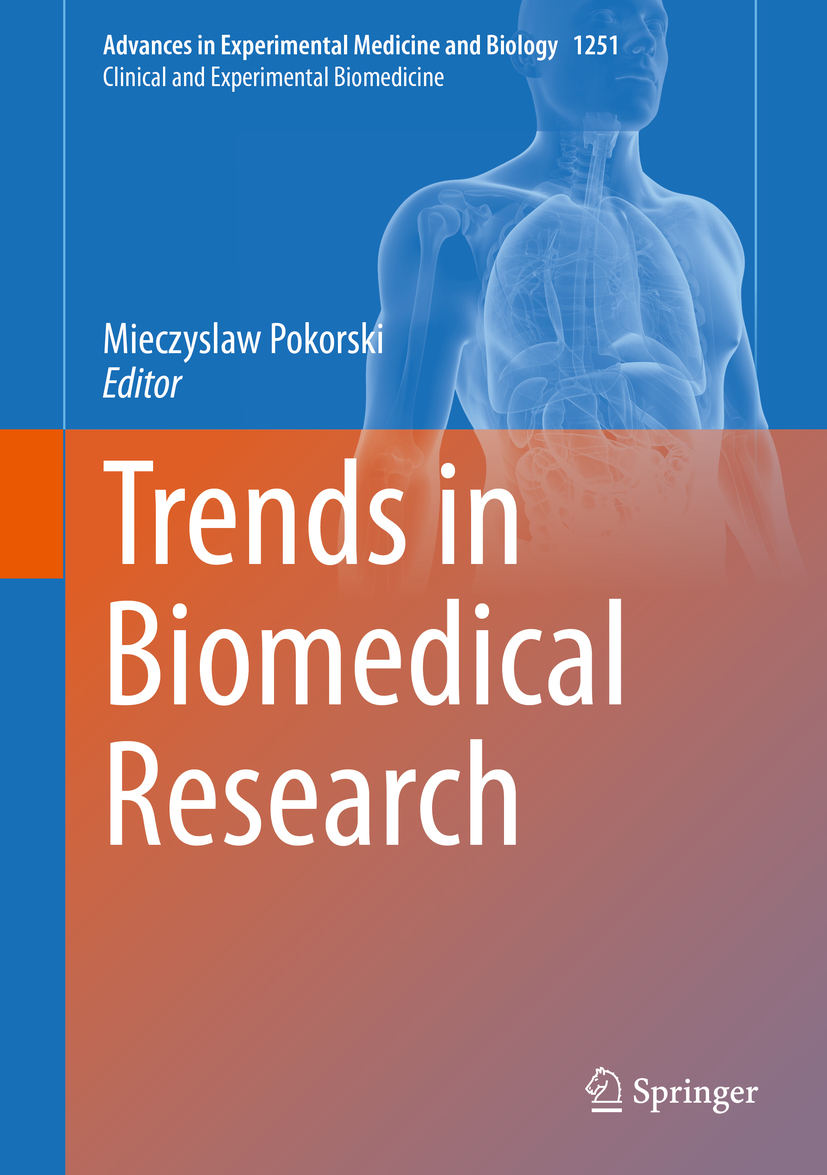
More information about this series at http://www.springer.com/series/16003

This Springer imprint is published by the registered company Springer Nature Switzerland AG.
The registered company address is: Gewerbestrasse 11, 6330 Cham, Switzerland
Titanium implants are considered the gold standard of treatment for dental and orthopedic applications. Biocompatibility, low elasticity, and corrosion resistance are some of the key properties of these metallic implants. Nonetheless, a long-term clinical failure of implants may occur due to inadequate osseointegration. Poor osseointegration induces mobility, inflammation, increased bone resorption, and osteolysis; hence, it may result in painful revision surgeries. Topographical modifications, improvement in hydrophilicity, and the development of controlled-release drug-loading systems have shown to improve cellular adhesion, proliferation, and differentiation. Surface modifications, along with drug coating, undoubtedly demonstrate better osseointegration, especially in challenged degenerative conditions, such as osteoporosis, osteoarthritis, and osteogenesis imperfecta. Anabolic bone-acting drugs, such as parathyroid hormone peptides, simvastatin, prostaglandin-EP4-receptor antagonist, vitamin D, strontium ranelate, and anti-catabolic bone-acting drugs, such as calcitonin, bisphosphonates, and selective estrogen receptor modulators, expedite the process of osseointegration. In addition, various proteins, peptides, and growth factors may accessorize the idea of localized therapy. Loading these substances on modified titanium surfaces is achieved commonly by mechanisms such as direct coating, adsorption, and incorporating in biodegradable polymers. The primary approach toward the optimum drug loading is a critical trade-off between factors preventing release of a drug immediately and those allowing slow and sustained release. Recent advances broaden the understanding of the efficacy of adsorption, hydrogel coating, and electrospinning layer-by-layer coating facilitated by differential charge on metallic surface. This review discusses the existing approaches and challenges for the development of stable and sustained drug delivery systems on titanium implants, which would promote faster and superior osseointegration.
Implantology, as a specialized branch of orthopedics and dentistry, has been recognized by clinician and researchers globally for quite some time. With the discovery of the phenomenon of osseointegration in the 19501960s, titanium became the material of choice for most clinicians in the field of dental and orthopedic implants (Brnemark et al. ). Therefore, osseointegration still remains an important challenge in implantology research.
Researchers and clinicians have always been of the opinion that supplemental treatment with drugs may help in improving the bone binding ability of implants. Although systemic administration of drugs along with implant placement is a conventional approach, side effects, such as systemic toxicity, short-term benefits, and patient inconvenience, limit their use. In contrast to these, localized therapy is generally devoid of these limitations (Anselmo and Mitragotri ). Other FDA-approved biodegradable polymers were tried to incorporate drug molecules, which may be exemplified by poly lactic acid (PLA) or poly lactic-co-glycolic acid (PLGA). However, high temperature reactions that occur during the chemical bonding phase of most materials have discouraged their further use. Lessons learned from the past have guided us toward the use of modern implants coated with drug molecules using novel processes that avoid the aforementioned concerns. Simple, low temperature, reproducible processes, which can be optimized to guide extended release patterns of drugs, have become the present day methods of choice. Other ideal characteristics of such devices include the absence or minimal systemic toxicity by targeting at the organ, tissue, or cellular level, which allows the use of a lower drug dose. Additional care needs to be taken during the fabrication process, to retain the original mechanical properties of an implant.
Font size:
Interval:
Bookmark:
Similar books «Trends in Biomedical Research»
Look at similar books to Trends in Biomedical Research. We have selected literature similar in name and meaning in the hope of providing readers with more options to find new, interesting, not yet read works.
Discussion, reviews of the book Trends in Biomedical Research and just readers' own opinions. Leave your comments, write what you think about the work, its meaning or the main characters. Specify what exactly you liked and what you didn't like, and why you think so.

